History of Slavery in North Carolina
Image: Illustration shows white children playing with a black child, and “represents the old Negro servants of the planter’s family among his children. The children of the [white] family grow up among the Negro domestic servants, and often learn to regard them with as much affection as they show their own parents.” Source: The Illustrated London News
Many of the first slaves in North Carolina were brought to the colony from the West Indies or other surrounding colonies, but a significant number were brought from Africa. Most of the English colonists arrived as indentrued servants, hiring themselves out as laborers for a fixed period to pay for their passage. In the early years the line between indentured servants and African slaves or laborers was fluid. Some Africans were allowed to earn their freedom before slavery became a lifelong status.
As the flow of indentured laborers from England to the colony decreased with improving economic conditions in Great Britain, more slaves were imported and the state’s restrictions on slavery hardened. The economy’s growth and prosperity was based on slave labor, devoted first to the production of tobacco.
Colonial laws were enacted to allow whites to control their slaves. The first of these was the North Carolina Slave Code of 1715. Under these laws, whenever slaves left the plantation they were required to carry a ticket from their master, which stated their destination and the reason for their travel. The 1715 code also prevented slaves from gathering in groups for any reason, including religious worship, and required whites to help capture runaway slaves.
The colony lacked the extensive plantation system of the Lower South, and when Carolina split into the North and South Carolina in 1729, North Carolina had about 6000 slaves, only a fraction of the slave population of South Carolina. As the plantation system expanded across the Lower South, many North Carolina slaves were “sold south” to work on large plantations. Slaves deeply feared this fate because it usually meant permanent separation from friends and family.
A second set of even stricter laws was put into place in 1741, which prevented slaves from raising their own livestock and from carrying guns without their master’s permission, even for hunting. The law also limited manumission – the freeing of slaves. A master could only free a slave for meritorious service, and even then the decision had to be approved by the county court. Perhaps the most ominous of all the laws was the one regarding runaway slaves: If runaways refused to surrender immediately, they could be killed and there would be no legal consequences.
By 1767, there were about 40,000 slaves in the North Carolina colony. About 90 percent of these slaves were field workers who performed agricultural jobs. The remaining 10 percent were mainly domestic workers, and a small number worked as artisans in skilled trades, such as butchering, carpentry, and tanning.
Because of its geography, North Carolina did not play a large part in the early slave trade. The string of islands that make up its Outer Banks made it dangerous for slave ships to land on most of North Carolina’s coast, and most slave traders chose to land in ports to the north or south of the colony.
The one major exception is Wilmington – located on the Cape Fear River, it became a port for slave ships because of its accessibility. By the 1800s, blacks in Wilmington outnumbered whites 2 to 1. The town relied on slaves’ abilities in carpentry, masonry, and construction, as well as their skill in sailing and boating, for its growth and success.
Most of the free black families formed in North Carolina before the Revolution were descended from unions or marriages between free white women and enslaved or free African American men. Because the mothers were free, their children were born free. Many had migrated or were descendants of migrants from colonial Virginia.
The North Carolina Provincial Congress passed a ban on importing slaves in 1774, because they felt increasing the number of slaves in the colony would increase the number of runaways and free blacks. The fear of slave uprisings only increased with the advent of the Revolutionary War in 1775. The British offered to help slaves escape if they would fight against the colonists, and a number of North Carolina slaves accepted. After the war ended and the new country was founded, tensions between whites and blacks in the state continued to increase.
Besides slaves, there were a number of free people of color in the state. Most were descended from free African Americans who had migrated from Virginia during the eighteenth century. After the Revolution, Quakers and Mennonites worked to persuade slaveholders to free their slaves. Some were inspired by their efforts, and the language of men’s rights, to arrange for manumission of their slaves. The number of free people of color rose markedly in the first couple of decades after the Revolution.
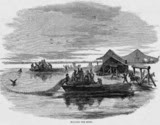
Image: Hauling the Seine
Fisheries of Albemarle and Pamlico Sounds in North Carolina, which were known to employ a considerable number of Free Negroes from neighboring counties. The huge seines (nets) could measure up to two miles in length.
The ban on importing slaves to North Carolina was lifted in 1790, and the state’s slave population quickly increased. By 1800, there were around 140,000 blacks living in the state. A small number of these were free blacks, who mostly farmed or worked in skilled trades. The majority were slaves working in agriculture on small- to medium-sized farms.
After 1800, cotton and tobacco became important export crops, and the eastern half of the state developed a plantation system based on slavery, while the western areas were dominated by white families who operated small farms. Most of North Carolina’s slave owners and large plantations were located in the eastern portion of the state.
Although North Carolina’s plantation system was smaller and less cohesive than those of Virginia, Georgia or South Carolina, there were significant numbers of planters concentrated in the counties around the port cities of Wilmington and Edenton, as well as suburban planters around the cities of Raleigh, Charlotte and Durham.
In addition, 30,463 free people of color lived in the state. They were also concentrated in the eastern coastal plain, especially at port cities such as Wilmington and New Bern where they had access to a variety of jobs. Free African Americans were allowed to vote until 1835, when the state rescinded their suffrage.
Antebellum Slavery
As in the colonial period, few North Carolina slaves lived on huge plantations. Fifty-three percent of slave owners in the state owned five or fewer slaves, and only 2.6 percent of slaves lived on farms with over 50 other slaves during the antebellum period. In fact, by 1850, only 91 slave owners in the whole state owned over 100 slaves.
Because they lived on farms with smaller groups of slaves, the social dynamic of slaves in North Carolina was somewhat different from their counterparts in other states, who often worked on plantations with hundreds of other slaves. In North Carolina, the hierarchy of domestic workers and field workers was not as developed as in the plantation system. There were fewer numbers of slaves to specialize in each job, so on small farms, slaves may have been required to work both in the fields and at a variety of other jobs at different times of the year.
Another result of working in smaller groups was that North Carolina slaves generally had more interaction with slaves on other farms. Slaves often looked to other farms to find a spouse, and traveled to different farms to court or visit during their limited free time.
Slave Codes
The slave codes passed in the colonial period continued to be enforced during the antebellum years. Whites hoped these laws would prevent threats of slave uprisings. In 1829, David Walker, a free black author born in Wilmington, gave whites in North Carolina another reason to fear their slaves turning against them.
Walker was an avid abolitionist who moved from his home state of North Carolina to Boston, where he helped escaped slaves establish new lives. He wrote and published a pamphlet, Walker’s Appeal, calling for immediate freedom for all slaves and urging slaves to rebel as a group. Copies of the pamphlet were smuggled into Wilmington via ships from the Northern US, and then spread throughout the state.
Whites reacted to Walker’s Appeal by passing increasingly restrictive slave laws. Nervous leaders in North Carolina passed legislation in 1830 making it illegal to distribute the pamphlet in hopes of quelling Walker’s radical ideas about abolishing slavery.
Another North Carolina law passed in 1830 made it a crime to teach a slave to read or write. Laws were even extended to restrict the rights of free blacks. An 1835 law prevented free blacks from voting, attending school, or preaching in public.
These restrictive laws were also passed in response to the increase in slave uprisings in nearby states, such as the Nat Turner Rebellion just across the border in Virginia. In 1831, Nat Turner led a group of 75 escaped slaves in an uprising, during which the group killed about 60 white people before being captured by the state militia. Whites in North Carolina were appalled at the thought of a similar rebellion happening in their state, and hoped severe slave laws would prevent such bloody uprisings.
The Life of a Slave
Daily life for a slave in North Carolina was incredibly difficult. Slaves, especially those in the field, worked from sunrise until sunset. Even small children and the elderly were not exempt from these long hours. Slaves were generally allowed a day off on Sunday, and on holidays such as Christmas or the Fourth of July.
During their few hours of free time, most slaves performed their own personal work. The diet supplied by slaveholders was generally poor, and slaves often supplemented it by tending small gardens or fishing. Although there were exceptions, the prevailing attitude among slave owners was to allot their slaves the bare minimum of food and clothing.
Shelter provided by slave owners was also meager. Many slaves lived in small stick houses with dirt floors, not the log slave cabins often depicted in books and films. These shelters had cracks in the walls that let in cold and wind, and had only thin coverings over the windows.
One area of their lives in which slaves were able to exercise some autonomy from their masters was creating a family. Slave owners felt it was to their advantage to allow slaves to marry, because any children from the marriage would add to their wealth. According to law, a child took on the legal status of its mother; a child born to a slave mother would in turn become a slave, even if the father was free.
Because the large plantations of the Lower South needed more slaves than the smaller farms of North Carolina, it was not uncommon for slaves in the state to be sold to slave traders who took them south to Georgia, South Carolina, Mississippi, Louisiana, or Alabama. Once a family member was sold and taken to the Deep South, they became almost impossible to locate or contact.
Although slaves had no way to publicly or legally complain about unfair treatment and abuse, they developed other methods of resistance. Slaves could slow down, pretend to be sick, or sabotage their work as a way to object against long hours of backbreaking labor. Slaves could also steal small amounts of food as a method of protesting their inadequate diet and providing for their families.
The Great Dismal Swamp, which is located in the northeastern part of the state and stretches from Edenton, North Carolina to Norfolk, Virginia, was a common destination for North Carolina runaways. The swamp was an ideal spot in which to hide and forage for food, and some escaped slaves chose to stay and make their homes there. The swamp was also known as a destination for escaped slaves from other states.
As in other states, the Underground Railroad developed in North Carolina to help escaped slaves reach safety. The North Carolina stops were primarily organized by members of the Religious Society of Friends, also known as the Quakers. Levi Coffin was well-known for assisting escaped slaves in Guilford County, North Carolina.
The North and the South clashed over the issue of slavery throughout the 1850s, and the conflict soon boiled over into Civil War. Southern slave owners felt they would quickly defeat the Union. The Union states had about 21 million people, while the Confederate states had approximately 9 million, and over three and a half million of those Southerners were slaves.
Emancipation
President Abraham Lincoln had issued the Emancipation Proclamation on January 1, 1863, stating that slaves in the Confederate states were freed. The proclamation had little immediate effect, but served as a promise that the government would free slaves after the war. Slaves in the Confederate states were officially freed by the passage of the Thirteenth Amendment of the U.S. Constitution in December of 1865.
SOURCES
Slavery in North Carolina
Slavery and Servitude in the Colony of North Carolina


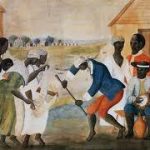
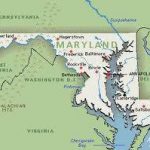
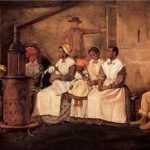
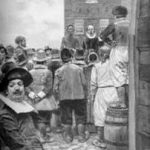
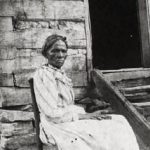
Can you give more information about North Carolina tobacco plantations?